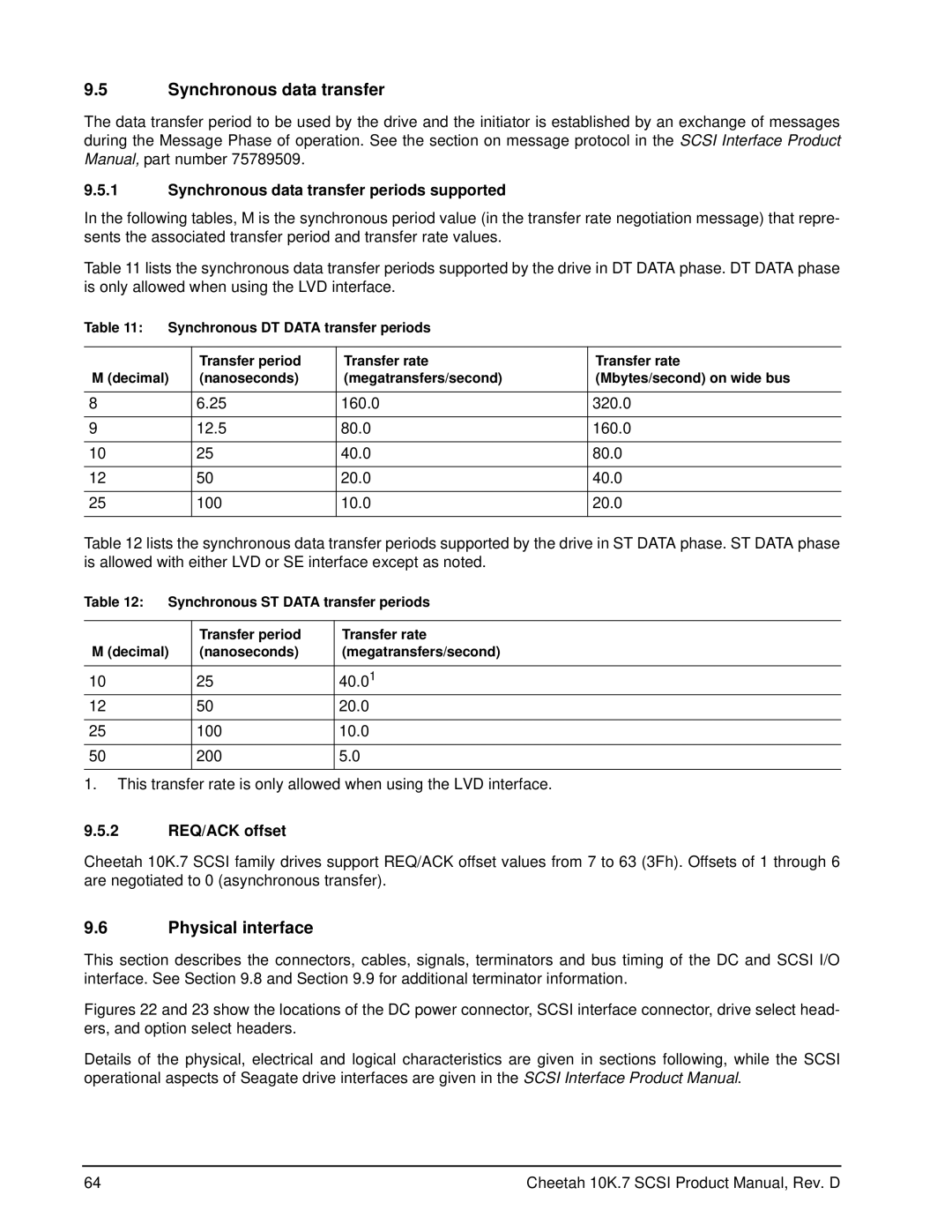ST3300007LW/LC, ST373207LW/LC, ST3146707LW/LC specifications
Seagate's ST3146707LW/LC, ST373207LW/LC, and ST3300007LW/LC are part of the company's renowned line of hard disk drives (HDDs), specifically designed for enterprise and high-performance computing environments. With their reliability and performance, these drives have become popular choices for data centers and critical applications requiring extensive storage capabilities.One of the standout features of these models is their capacity to handle large volumes of data. The ST3146707LW/LC has a capacity of 146GB, while the ST373207LW/LC offers 73GB, and the ST3300007LW/LC comes with a substantial 300GB. These capacities make them well-suited for applications that require not only high storage space but also rapid access to data.
In terms of performance, these drives utilize a 10,000 RPM spindle speed, which significantly enhances data access times and overall performance. The combination of fast rotational speeds with Seagate's advanced caching algorithms allows for swift data retrieval, making these drives ideal for environments where speed is crucial.
These HDDs also employ the SCSI (Small Computer System Interface) interface, which promises high data transfer rates and reliability in enterprise-level applications. The Ultra320 SCSI interface can support transfer rates up to 320 MB/s, ensuring that the drives can efficiently communicate with other system components.
Another key technology featured in these models is Seagate's Adaptive Error Correction technology, which enhances data integrity and reliability. This feature helps in the detection and correction of errors that can occur during data transfer, reducing the risk of data loss.
Performance consistency is critical in enterprise environments, and these drives are built to endure the demands of 24/7 operation. They are designed with robust mechanisms to withstand temperature fluctuations, shock, and vibrations commonly found in data center settings.
In summary, the Seagate ST3146707LW/LC, ST373207LW/LC, and ST3300007LW/LC hard drives exemplify advanced features and technologies tailored for enterprise storage solutions. With significant capacities, impressive spindle speeds, SCSI connectivity, and reliability-focused technologies, these drives remain a valuable asset for businesses relying on stable and high-performance data storage.
